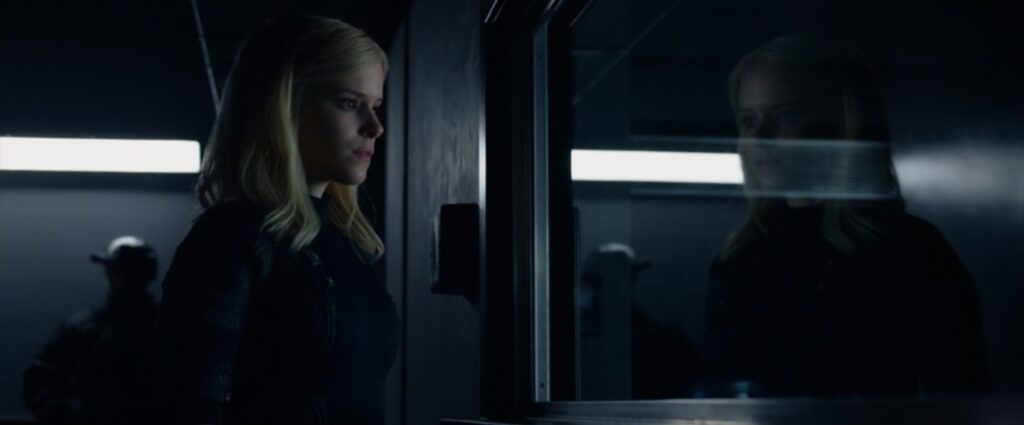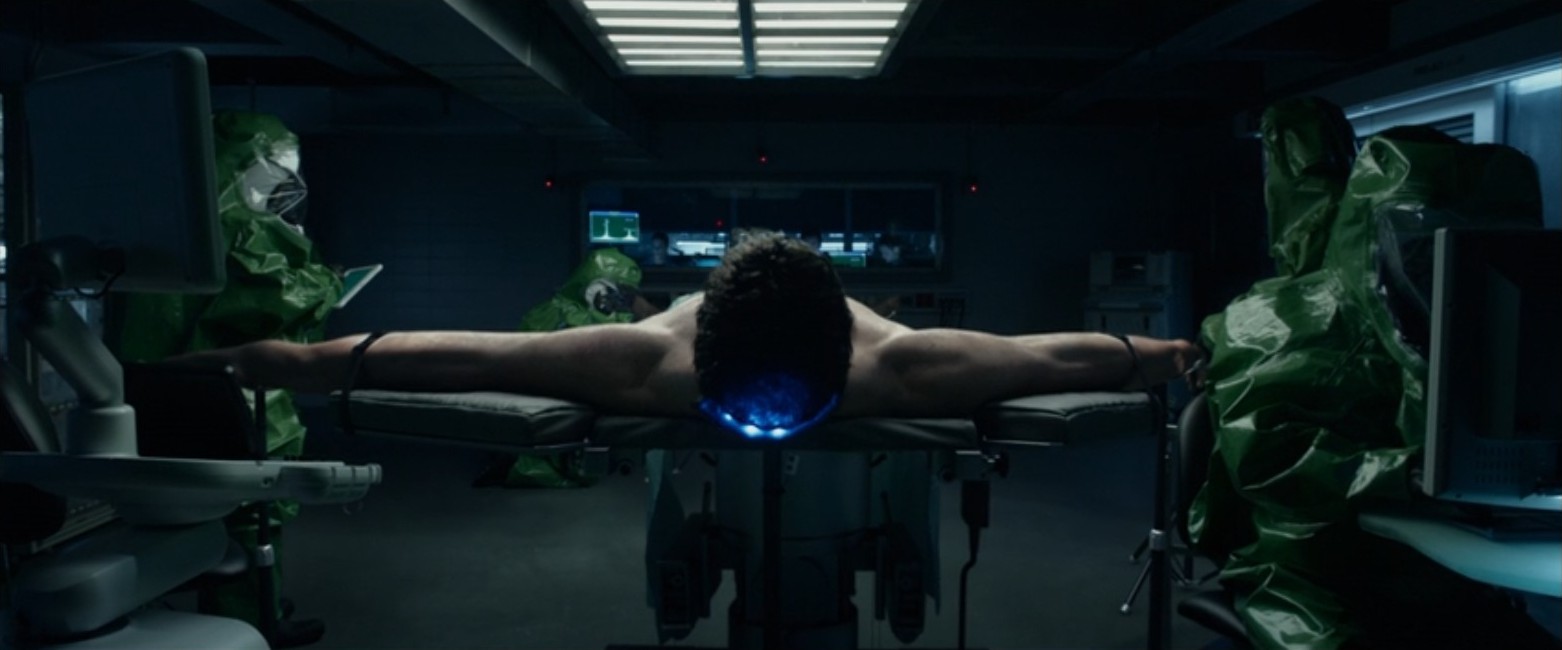The Fantastic Four: First Steps is the best (official) Fantastic Four movie. You barely need to like it for that to be true. Marvel’s original superstar team has had terrible luck on the big screen, from a low-budget 1994 Roger Corman movie that was never officially released to Tim Story’s mid-2000s movies, which were not much improved by their availability on thousands of screens nationwide. In 2015, a pre-Disney Fox made a last-ditch attempt to reboot the property into… something. A proper companion piece for the studio’s still-running X-Men movies? A bigger-budget version of Josh Trank’s found-footage superhero project Chronicle? Anything, so long as it ended in Fox retaining the rights?
Whatever Trank’s 2015’s Fantastic Four was supposed to be, it obviously didn’t work out, given the movie’s low grosses and a single-digit Rotten Tomatoes critics’ score. But while it’s hard to wholeheartedly recommend the movie in full, it did deserve the temporary title of “best Fantastic Four movie” — partially by default, and partially because it’s surprisingly in sync with some of the better early-2000s, pre-MCU superhero movies.
In those days, the idea of skipping over a superhero origin story, as First Steps and James Gunn’s 2025 Superman reboot do, was almost unthinkable. Bryan Singer’s 2000 movie X-Men, the first big 21st-century superhero film, is essentially an anthology of origin stories in miniature. Sam Raimi’s 2002 Spider-Man hit previously unseen heights by retelling one of comics’ most familiar origins. Even Mark Steven Johnson’s 2003 Daredevil, which isn’t precisely an origin story, nonetheless pauses to explain Matt Murdock’s background in an extensive flashback. By 2015, these things understandably felt like old hat, not least because most major superhero origin stories had already been told in movies. That includes the Fantastic Four, who received a slapdash version of that standard treatment back in 2005.
So it’s counterintuitive that Trank’s film revisits the origins of Reed Richards (Miles Teller), Sue Storm (Kate Mara), Johnny Storm (Michael B. Jordan), and Ben Grimm (Jamie Bell), going back even further than the usual Fantastic Four starting point to spend 10 minutes on Reed and Ben’s childhood friendship. It’s not time wasted, though; those scenes have a neo-Spielbergian sense of earnest wonder that sets up the movie’s interest in dark science fiction over wild fantasy. They also lay enough groundwork in the relationship between prodigious but misunderstood Reed and working-class Ben that when Reed goes off to New York City for college, the class divide that drives their expected fates is quickly and clearly communicated.
That sense of division is another area where Trank’s film goes against the natural grain of the material in a productive way, lending it common ground with X-Men as well as Ang Lee’s much-maligned 2003 movie Hulk. (Still the best Hulk solo movie, not that there’s much competition.) When the quartet does eventually acquire their powers, about halfway through the movie, they’re quickly isolated from each other, stuck in a series of military labs as other scientists try to determine the best course of action for a man made of rocks, a human torch, a woman who keeps disappearing, and a body that can be stretched to grotesque proportions. For the foursome dealing with their newfound powers, it’s a scary experience that only exacerbates their feelings of separation from “normal” humans.
“I just kinda jumped to ‘body horror’ in my head,” Trank told Entertainment Weekly (and other outlets) when promoting the 2015 film ahead of release. While it would be a stretch to say the movie fully belongs to that subgenre, it does feel more engaged with the weird science of these superheroes than First Steps. The new movie treats Reed’s stretchy body as an afterthought for much of its runtime, and features a Ben Grimm so relatively comfortable in his own rocky skin that he lacks much inner tension.
Trank’s versions of the characters have plenty of strife, and he may have gone too far in that direction, largely ditching the family dynamics so core to the original characters. But their newly alienated forms have some potent ideas behind them: The Thing as a government weapon, yearning to be free; Reed, able to stay off-grid in part by using his flexibility to disguise himself; Sue as a character so guarded that you can practically see the force-field bubble around her before she actually acquires that power; Victor Von Doom warped by his accidental abandonment in another dimension. Reed maintains his gee-whiz enthusiasm for science, as the movie around him makes it seem more like a dark, unruly realm that only a few can hope to tame.
All told, the 2015 movie does create an X-Men-like balance between human foibles and amazing yet alienating powers. Teller isn’t necessarily a natural choice to play Reed Richards — at the time, he would have made more sense as Johnny Storm — but his awkward-outcast version of the character is more recognizable and relatable than the aloof, benevolent genius of other big-screen incarnations. Similarly, Jordan makes Johnny’s cockiness more organic than the slick wisecracking Chris Evans had to work with in Tim Story’s 2005 and 2007 movies, even as his Human Torch form is depicted with ghostlier stylization. (For a narrative that feels so incomplete, the movie’s visual effects are largely decent.) All four actors do the difficult job of grounding these characters in a grimmer, more contemporary reality than the pages of their optimistic 1960s comic magazines.
There’s nothing wrong with embracing the more outsized aspects of superhero comics. Gunn’s Superman does this; so do classics of the form as varied as Batman Returns and The Avengers. Yet the act of translation undertaken by some of those early-2000s movies, easing audiences into these alternate worlds, can be compelling in its own right, and was probably necessary to take superhero movies into the mainstream.
Sometimes that process can be surprisingly smooth, as with X-Men, which effectively distills years of comic-book soap opera into stories and performances into an accessible jumping-off place. Sometimes it creates strange hybrids of florid melodrama and hand-drawn lyricism, as with Hulk. The 2015 Fantastic Four is closer to the latter (Reed even spends some of it as a scientist on the lam, like Bruce Banner in Hulk) without the same level of trust afforded Lee, who did a superhero movie between Oscar nominations.
Various behind-the-scenes shenanigans, seemingly owed to a combination of Trank’s relative inexperience and that weird cocktail of studio jitters and full-steam-ahead release-date adherence, led to a movie that feels shockingly unfinished. Speaking to Polygon some years ago for a lengthy Trank profile, original screenwriter Jeremy Slater described the full movie as more or less an expanded version of the first 40 pages of the script he and Trank worked on together. That tracks with how the first hour-plus of character-driven sci-fi shifts abruptly into Fox Forest mode, the seeming default setting of the worst Marvel movies from 20th Century Fox, where heroes of unimaginable power wind up skulking around dimly-lit forests and, in this case, hallways.
A later development across various studios’ superhero films, the ubiquitous glowy garbage-swirl sky-beam, is also sadly present and accounted for. Staying awake for the final 20 minutes of this movie, where the team actually flexes their powers with confidence, is a challenge that makes it difficult to fully recommend the 2015 Fantastic Four, especially with a far more polished version now available.
Yet it’s surprising, given the movie’s terrible reputation, how close it comes to repeating the kind of distinctive, smaller-scale superhero material that became an increasingly dicey proposition as these projects got too big (and interconnected) to fail. Fantastic Four attempts to bridge the gap between comic-book spectacle and its cinematic cousins like monster movies, ’50s sci-fi, and Amblin-style misfit adventures. Given how much of it turns on lab mishaps, maybe it’s appropriate that the experiment ultimately failed.
Content shared from www.polygon.com.



